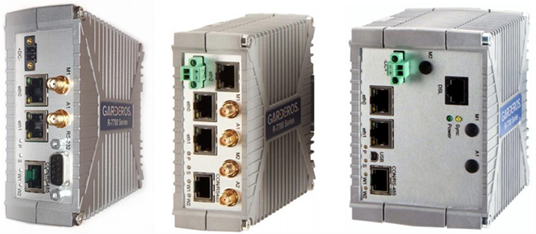
Telecommunications companies are reallocating the radio spectrum to deploy new 3GPP technologies as consumers demand faster internet (i.e. 5G). As a result, there will be a worldwide decline in commercial demand for 3G connectivity. In Australia, Optus plans to shut down a portion of its 3G network as early as May 2022, and Telstra has announced a complete 3G shut down by June 2024. As a result, both operators are encouraging their customers to migrate to other technologies as soon as possible.
This could be as simple for everyday consumers as purchasing a new phone, but it's a different story for utilities, transportation operators, and others in the industrial world. They could have hundreds, if not thousands, of 3G-enabled IoT devices in difficult-to-reach locations that are expensive to replace. This begs the question of which wireless technology to adopt, and which offers the best balance of network availability, reliability, longevity, and cost efficiency? This article investigates the various cellular technologies that may be considered during this difficult process.
Fifth Generation (5G)
5G is the most recent technology available to consumers. This is intended for applications that require big data and/or real-time streaming. The main advantages are unrivaled speeds exceeding 4Gbps and a very low latency of 1-6 milliseconds. Because of its higher capacity and faster hand-off, 5G is less affected by network congestion and peak usage periods (think stadium full of people using social media at the same time). Healthcare, retail, and smart city applications that require high bandwidth and low latency are expected to benefit from 5G.
5G Availability Reliability

Telstra 5G coverage (left) vs 3G coverage (right)
Because 5G wireless does not penetrate as well as 4G, buildings, trees, and rain are known to block 5G signals, resulting in problematic or unpredictable connections. Reliable coverage necessitates the deployment of a high density of towers/gateways, which necessitates significant time and investment on the part of the telecommunications operator. Given Australia's low population density and the fact that operators are not incentivized to expand coverage in the absence of a return on investment, 5G as we know it today is unlikely to have available coverage for the same geographical area as 3G in the foreseeable future. Many 5G devices are backward compatible with 4G and 3G networks, so make sure to check for compatible bands/frequencies with your operator; otherwise, you may be limited to only city coverage.
Should you use 5G?
There are some disadvantages to using 5G for industrial applications. The vast majority of industrial applications will not benefit from increased bandwidth/latency; reduced coverage will be an issue for many; the cost of hardware and services will be higher; and there may be cyber security concerns. Many industrial use-cases, such as RTU streaming DNP3 data over UDP, rely on continuous 'sessions,' and the complexity of 5G architecture may introduce more issues than it solves. If you need high-speed/low-latency in your application and plan to deploy in densely populated areas, 5G is a viable option. Due to a lack of coverage, it is still largely uncharted territory in Australia.
Fourth Generation/Long Term Evolution (4G LTE)
As the name implies, 4G LTE was created with the long term in mind, and it currently meets the majority of consumer and commercial demand for mobile applications. It can stream video and transfer large amounts of data at speeds of hundreds of megabits per second.
4G Availability and Reliability

Telstra 4G coverage (left) vs 3G coverage (right)
Geographically, 3G and 4G coverage overlap, and most 4G LTE devices are backwards compatible with 3G networks and can connect to both. When both are available, an application may benefit from some form of redundancy (at least until 3G is turned off!).
It's not all roses; 4G networks suffer from network congestion, which occurs when cells lack the capacity to serve a large number of devices at the same time. This is most likely to happen in tourist areas or during sporting events when a large number of commercial users connect to the network at the same time.
Telecommunications companies determine which network (3G/4G or frequency) your device connects to, and they may prioritize speed over reliability. Garderos routers, for example, can be configured to override this and prioritize networks based on service quality. This is useful in industrial control/SCADA applications where reliability takes precedence over speed.
Should you use 4G/LTE?
If you're thinking, "3G is being phased out, and 4G will be next!" you're probably right. However, until an alternative technology provides adequate coverage to meet consumer and commercial demand, 4G will remain prevalent and will be here well beyond 2030. Because it is well-proven, globally accepted, and well-known/supported, it is currently the most seamless replacement for 3G.
Category M1 (CAT-M1 or LTE-M)
CAT-M1 is an extension to LTE, and was specified in 3GPP Release 13. The intention of CAT-M1 was to rival IoT Low Power WAN (LPWAN) technologies such as Sigfox and LoRaWAN, which provide a low-power solution with extended coverage range. This is achieved in exchange for a lower data rate (max 1Mbps), which is somewhere between 2G and 3G network speed.
CAT-M1 Availability and Reliability

Telstra LTE-M coverage (left) vs 3G coverage (right)
CAT-M1 is deployed as an extension of LTE, and coverage is obtained through existing LTE infrastructure. The map above shows CAT-M1 coverage to be quite substantial, however it is also understood that Telstra uses CAT-M1 “Coverage Enhancement Mode A”, which provides moderate coverage enhancement (Mode B extends coverage further but will decimate bandwidth). It is therefore recommended that one take these coverage maps “with a grain of salt” and perform field testing to manage their expectations. CAT-M1 bandwidth is inversely proportional to the distance from the nearest cell tower, so this needs to be considered in the application.
In Australia it’s possible to interchangeably use a standard 4G SIM card in a CAT-M1 device, which makes it easy to evaluate and use CAT-M1 much in the same way as 4G LTE, albeit with significantly lower bandwidth. The networks do operate differently and whilst a 4G SIM works in a CAT-M1 device, a CAT-M1 radio is not compatible with 4G or 3G networks.
Should you use CAT-M1/LTE-M?
We have tested CAT-M1 in a range of applications and have found it to be stable for applications that require low bandwidth (eg for connecting to RTU’s and polling with DNP3 or Modbus). Basic CAT-M1 modems will not suffice for applications requiring large file transfers (eg. RTU firmware upgrades, security patches, RDP, etc) or Ethernet connectivity.
Because CAT-M1 also appears in the 5G standard, it should theoretically outlive 4G. This makes it the most future-proof technology; it is wide-spread, lower cost, available now and will be available long into the future.
Narrowband IoT (NB-IoT)
Designed predominantly for data acquisition applications (i.e. smart metering, water quality monitoring, etc) where very long battery life is required, NB-IoT is the true rival to the LPWAN technologies mentioned above. In the coming years we will see millions of NB-IoT devices being connected to our utilities. Whilst a fascinating topic in its own right, NB-IoT is a message-based network which does not offer the same type of IP connectivity as the other technologies above, therefore it is worth mentioning but sits outside the scope of this review.
Summary
Which technology provides the best balance of network availability, reliability, longevity, and cost efficiency? The answer to this depends on the application. 4G currently supports any 3G application where coverage is available and offers a great balance. CAT-M1 is appealing for fringe/rural areas where 3G is currently available but 4G signal is inadequate. 5G offers backwards compatibility but is more expensive for little-to-no benefit.
For large and widely distributed networks covering urban and regional areas, it is worth considering a hybrid solution that can utilise any network is available in the area. Utilities in Australia have already begun to use the Garderos R7758 dual-module (not to be confused with dual-SIM) cellular routers to exploit the benefits of both 4G and CAT-M1 networks in a single device. Those sites with 4G coverage can reap the benefits of the additional bandwidth, whereas those more difficult to reach sites can utilise the enhanced coverage provided by CAT-M1. A dual-module device may be slightly higher cost, however the flexibility it offers far outweighs this and the cost of the device is marginal vs the cost of sending contractors out to replace routers in the field.
How the fleet is managed should be considered upfront. Consider utilising centralised management, which improves cyber security, reduces downtime and provided a unified environment agnostic of the communications technology.
Based in Munich and established in 2002 as a product of Siemens' information and communication networks (ICN) division, Garderos specialises in providing secure data communication solutions for the special requirements of utility, transport, and telecommunications markets. With 20-years of continuous development and experience gained from delivery of large-scale utility projects, Garderos has become a medium-sized system supplier dedicated to serving large customers with installations exceeding 10,000 routers.
Unlike most vendors, Garderos can tailor solutions to address the specific needs and business objectives of their exclusive customer base. In doing this, Garderos integrates virtually any combination of CAT-M1, 4G and NBN connectivity in their industrial routers, with 5G due for release in late 2022.
Control Logic, which is now an IPD business is the Australian sales, support and engineering partner for Garderos. Our team of qualified network and control-systems engineers and cyber security experts can help you design a future-proof, cyber secure and centrally-managed telemetry network at any scale.
